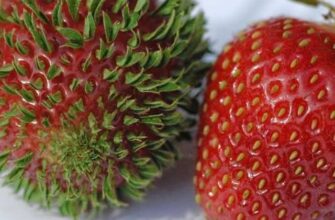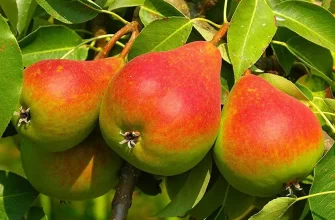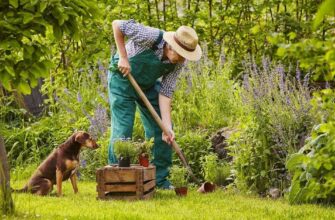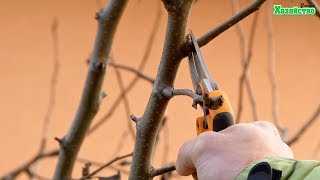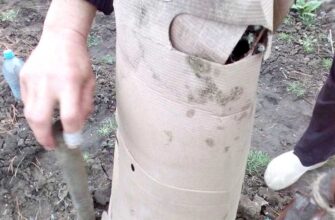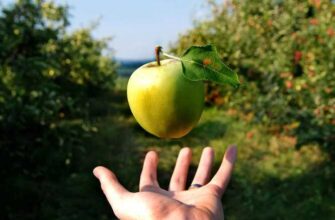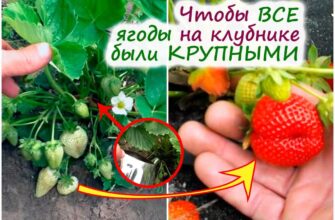- Мифы об осветлении деревьев: что правда, а что вымысел?
- 1. Осветление деревьев помогает им лучше расти и развиваться
- 2. Белить стволы деревьев помогает им защититься от вредителей и болезней
- Осветление деревьев — это вредно?
- Какие деревья нуждаются в осветлении?
- Можно ли осветлять деревья самостоятельно?
- Разрушительность осветления деревьев: правда или вымысел?
- Популярные мифы
- Реальная необходимость
- Вред ли приносит осветление деревьев экосистеме?
- Как осветление деревьев влияет на их рост и развитие?
- Мифы о необходимости осветления деревьев
- Реальная необходимость осветления деревьев
- Как осветление деревьев может повлиять на окружающую среду?
- Осветление деревьев: мифы и реальность
- Влияние осветления на окружающую среду
- Преимущества осветления деревьев для городской среды
- Осветление деревьев: способы и технологии
- Осветление деревьев: мифы и реальность
- Оценка необходимости осветления
- Мифы о сезонности осветления деревьев
- 1. Осветлять деревья нужно только весной
- 2. Белить деревья только взрослые
- 3. Осветление деревьев не приносит пользы
- Какие материалы используются для осветления деревьев?
- Подводные камни осветления деревьев: что нужно знать?
- Миф 1: Белить деревья можно в любое время года
- Миф 2: Осветление деревьев необходимо для всех видов
- Миф 3: Осветление защищает деревья от всех вредителей и болезней
- Миф 4: Осветление деревьев делает их более привлекательными для покупателей
- Вопрос-ответ:
- Зачем осветлять деревья?
- Как осветлять деревья?
- Какие преимущества может дать осветление деревьев?
- Могут ли деревья подвергаться вредным последствиям от осветления?
- Видео:
- Нарушение правил санитарной обрезки деревьев и последствия повреждений деревьев (съёмка10 06 2023г)
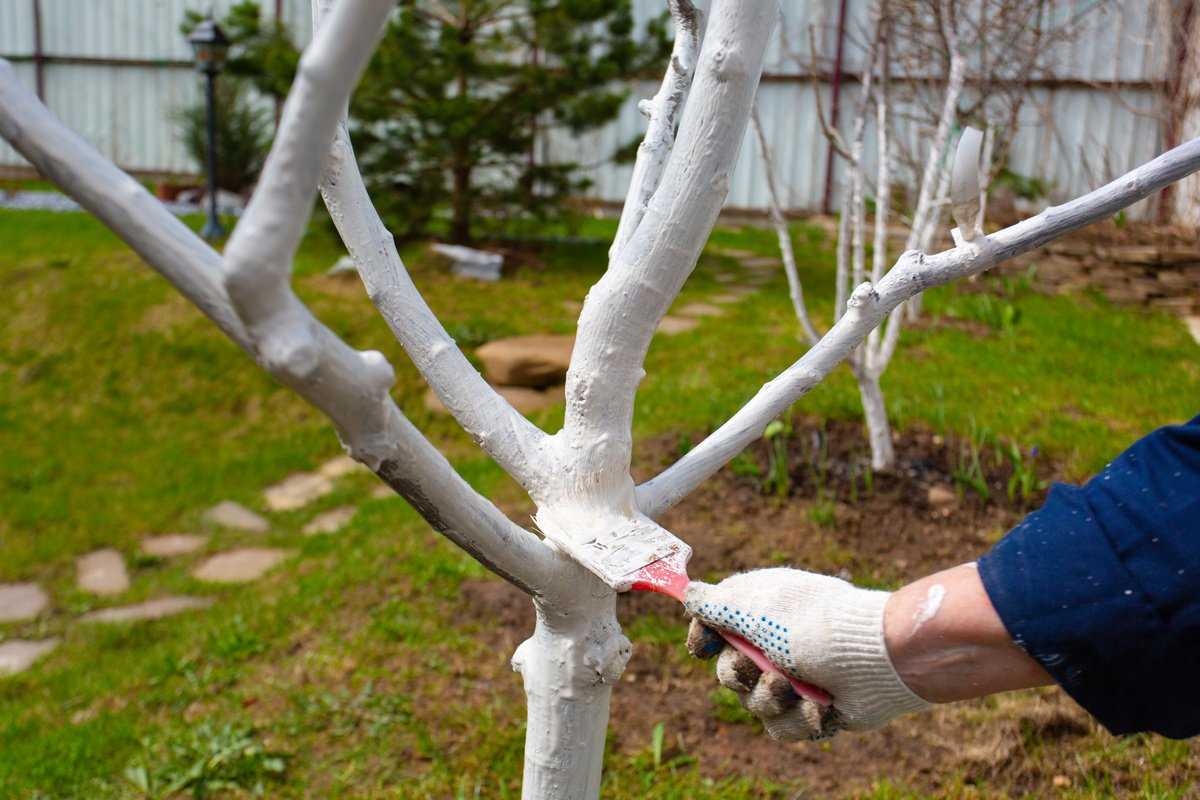
В наше время все больше людей задумываются о том, чтобы белить деревья на своей территории. Эта практика становится все более популярной, но до сих пор существует множество мифов и недопонимания вокруг необходимости осветления деревьев. В данной статье мы разбираемся с этими мифами и рассматриваем реальную необходимость данной процедуры.
Первый миф, с которым мы сталкиваемся, — это утверждение о том, что осветление деревьев необходимо только для эстетических целей. Однако это далеко не так. Осветление деревьев имеет как эстетические, так и практические причины. Во-первых, белильные смеси помогают защитить деревья от солнечного перегрева, что особенно актуально в жаркое время года. Во-вторых, осветление деревьев помогает предотвратить повреждения коры от заморозков в зимнее время. Разрушение коры может привести к гибели дерева.
Второй миф, с которым мы сталкиваемся, — это мнение о том, что осветление деревьев вредно для их здоровья. Но на самом деле все зависит от выбранного метода и качества используемых материалов. Если правильно подобрать смесь и следовать инструкциям по применению, то осветление не повредит деревьям и даже может поддержать их здоровье. Например, некоторые белильные смеси содержат компоненты, которые способствуют проникновению кислорода в корень дерева, что благотворно влияет на его развитие.
Важно отметить, что не все деревья нуждаются в осветлении. Есть виды, которые уже имеют светлую кору и сами эффективно отражают солнечные лучи. Поэтому перед осветлением деревьев необходимо проконсультироваться с специалистом и учесть особенности каждого конкретного дерева.
Мифы об осветлении деревьев: что правда, а что вымысел?
Осветление деревьев — процесс, который вызывает разные мнения и споры среди садоводов и деревенских жителей. Существует множество мифов и непроверенных утверждений о необходимости осветления деревьев. Давайте разберем популярные мифы и выясним, что на самом деле правда.
1. Осветление деревьев помогает им лучше расти и развиваться

Этот миф имеет реальное обоснование: когда деревья находятся в тени других растений или зданий, им может не хватать солнечного света для фотосинтеза. Однако, не все деревья нуждаются в осветлении. Некоторые сорта деревьев, такие как хвойные, предпочитают тень и могут плохо расти при прямом солнечном свете. Поэтому, перед тем, как принять решение о необходимости осветления, следует разобраться, какие деревья растут на вашем участке.
2. Белить стволы деревьев помогает им защититься от вредителей и болезней
Это неправильное утверждение. Осветление стволов деревьев с помощью белки или других веществ не является эффективным методом защиты от вредителей и болезней. Более того, некоторые вещества, используемые для осветления, могут оказывать негативное влияние на здоровье деревьев и окружающей среды. Лучшим способом защитить деревья от вредителей и болезней является правильный уход за ними, регулярная обрезка и профилактическое лечение.
Итак, мы разобрались с некоторыми популярными мифами об осветлении деревьев. Важно помнить, что каждое дерево уникально и требует индивидуального подхода к уходу. Перед принятием решения об осветлении, необходимо провести анализ и определить реальную необходимость этой процедуры для конкретных деревьев на вашем участке.
Осветление деревьев — это вредно?
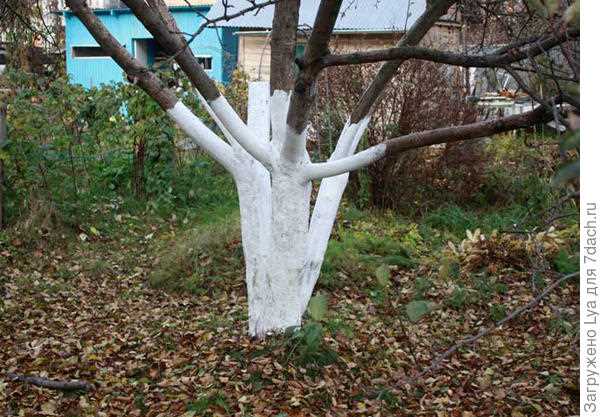
Осветление деревьев — одна из популярных практик в садоводстве, которая заключается в нанесении специальной белой краски на стволы и ветви деревьев. Некоторые считают, что это вредно для растений, однако, на самом деле, осветление деревьев имеет реальную необходимость и может быть полезным.
Миф о вредности осветления деревьев основан на предположении, что белить стволы деревьев может привести к нарушению их дыхания. Однако, это не соответствует действительности. Осветление деревьев помогает защитить их от солнечных ожогов и перегрева. Белая краска отражает солнечные лучи, предотвращая нагревание ствола и ветвей, что особенно важно для молодых деревьев.
Белить деревья также полезно для их защиты от морозов. Белая краска создает дополнительный слой изоляции, который помогает снизить воздействие холода на растение. Это особенно актуально в зимний период, когда деревья находятся в состоянии покоя и более уязвимы для неблагоприятных погодных условий.
Необходимость осветления деревьев может возникнуть и в городских условиях. В городах стволы деревьев часто подвергаются повреждениям, например, от ударов автомобилей или велосипедов. Осветление помогает не только маскировать повреждения, но и улучшает видимость деревьев, что способствует их охране и сохранению.
Таким образом, осветление деревьев — это не только необходимая практика, но и полезная для растений. Однако, при осуществлении осветления необходимо учитывать сезонные и климатические условия, выбирать специальную краску, которая не повредит растение, и правильно наносить ее на стволы и ветви деревьев.
Какие деревья нуждаются в осветлении?
Разбираем реальную необходимость белить популярные деревья.
Осветление деревьев – это процесс, который может быть полезным для определенных видов деревьев. Но какие именно деревья нуждаются в осветлении?
Во-первых, это деревья, которые растут в тени других деревьев или зданий. Тени могут быть причиной недостатка солнечного света, что может негативно сказаться на здоровье и развитии деревьев. Осветление помогает компенсировать недостаток света и способствует нормальному росту и развитию деревьев.
Во-вторых, это деревья, которые имеют плотную листву или ветви, которые мешают проникновению солнечных лучей. Такие деревья могут омрачать садовые участки или закрывать вид с окон. Осветление позволяет проникновению света внутрь кроны дерева, что повышает эстетическую привлекательность и улучшает освещение вокруг дерева.
В-третьих, это деревья, которые подвержены заболеваниям или повреждениям. Осветление может помочь стимулировать заживление ран и бороться с заболеваниями, так как солнечный свет обладает противогрибковыми и антисептическими свойствами.
Таким образом, осветление деревьев может быть необходимым для популярных видов деревьев, которые растут в тени, имеют плотную листву или подвержены заболеваниям. Важно учитывать индивидуальные особенности каждого дерева и выбирать методы осветления, которые наиболее эффективны и безопасны для конкретного вида.
Можно ли осветлять деревья самостоятельно?

Разбираем реальную необходимость и мифы об осветлении деревьев.
Осветление деревьев – это процесс нанесения белого состава на стволы и ветви для защиты деревьев от солнечных ожогов и заморозков. Но можно ли осветлять деревья самостоятельно? Ответ на этот вопрос не так прост, как может показаться.
Самостоятельное осветление деревьев требует определенных знаний и навыков. Неправильное нанесение белого состава может нанести вред дереву и повредить его структуру. Поэтому, если у вас нет опыта в осветлении деревьев, рекомендуется обратиться к профессионалам, которые смогут выполнить эту работу качественно и безопасно.
Опытные специалисты знают, как правильно белить деревья, чтобы этот процесс был безопасным и эффективным. Они выберут правильный состав и нанесут его на дерево, учитывая его особенности и состояние. Также они будут следить за тем, чтобы нанесение состава не повредило кору и не вызвало заболеваний у дерева.
Важно помнить, что осветление деревьев не всегда является необходимостью. В некоторых случаях оно может быть полезным, особенно для молодых и нежных растений. Однако, для здоровых и сильных деревьев, осветление может быть излишним и даже вредным.
Разрушительность осветления деревьев: правда или вымысел?
Осветление деревьев — это процесс, который вызывает противоречивые мнения. Существуют мифы о его полезности и необходимости, но какая из этой информации является реальной? Давайте разберемся.
Популярные мифы
Одним из популярных мифов является утверждение, что осветление деревьев улучшает их рост и здоровье. Некоторые считают, что это помогает дереву получить больше света и энергии, что приводит к его быстрому развитию. Однако, многочисленные исследования показывают, что осветление может негативно влиять на дерево, приводя к его ослаблению и повышенной уязвимости перед болезнями и вредителями.
Другим популярным мифом является утверждение о необходимости осветления деревьев для сохранения их внешнего вида. Некоторые считают, что только белые и светлые стволы деревьев выглядят привлекательно, и поэтому необходимо осветлять все деревья в городской среде. Однако, это не соответствует действительности. Деревья имеют свою естественную красоту и осветление может исказить их естественный вид, вызвав негативную реакцию у жителей и экологов.
Реальная необходимость
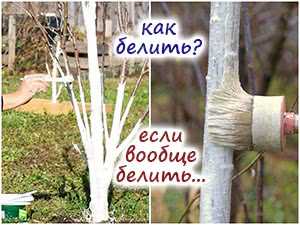
В ряде случаев осветление деревьев может быть необходимо для защиты от насекомых, болезней и других факторов, которые могут нанести вред дереву. Однако, это должно быть осуществлено с учетом не только потребностей дерева, но и окружающей среды и естественного ландшафта. Осветление не должно быть массовым и бездумным процессом, а должно проводиться с учетом всех возможных последствий и принципов экологической устойчивости.
Выводы по этой теме позволяют нам разоблачить многие мифы о необходимости осветления деревьев. Однако, мы не должны отрицать реальную необходимость этого процесса в некоторых случаях. Важно помнить, что осветление должно быть проведено с учетом экологических принципов и с учетом потребностей деревьев и окружающей среды. Важно сохранить естественную красоту и здоровье деревьев, обеспечивая им необходимую защиту и уход.
Вред ли приносит осветление деревьев экосистеме?
Осветление деревьев – популярная практика, которая вызывает споры среди специалистов. Существуют мифы о необходимости белить стволы деревьев, но на самом деле эта процедура может причинить вред экосистеме.
Основной миф заключается в том, что осветление деревьев является необходимой процедурой для их здоровья. Однако, на самом деле, деревья способны самостоятельно защищаться от солнечных ожогов и замерзания, благодаря своей природной адаптации.
Беление деревьев может привести к нарушению естественного баланса в экосистеме. Во-первых, беленые стволы притягивают больше внимания на себя, что может привлечь вредителей и насекомых. Во-вторых, белый цвет отражает солнечные лучи, что может повлиять на окружающую растительность и животных, которые привыкли к тени и темному стволу дерева.
Таким образом, осветление деревьев создает только видимую привлекательность, но приносит реальный вред экосистеме. Вместо этого, рекомендуется уделить внимание здоровью деревьев, правильному уходу и соблюдению естественных процессов их развития.
Как осветление деревьев влияет на их рост и развитие?
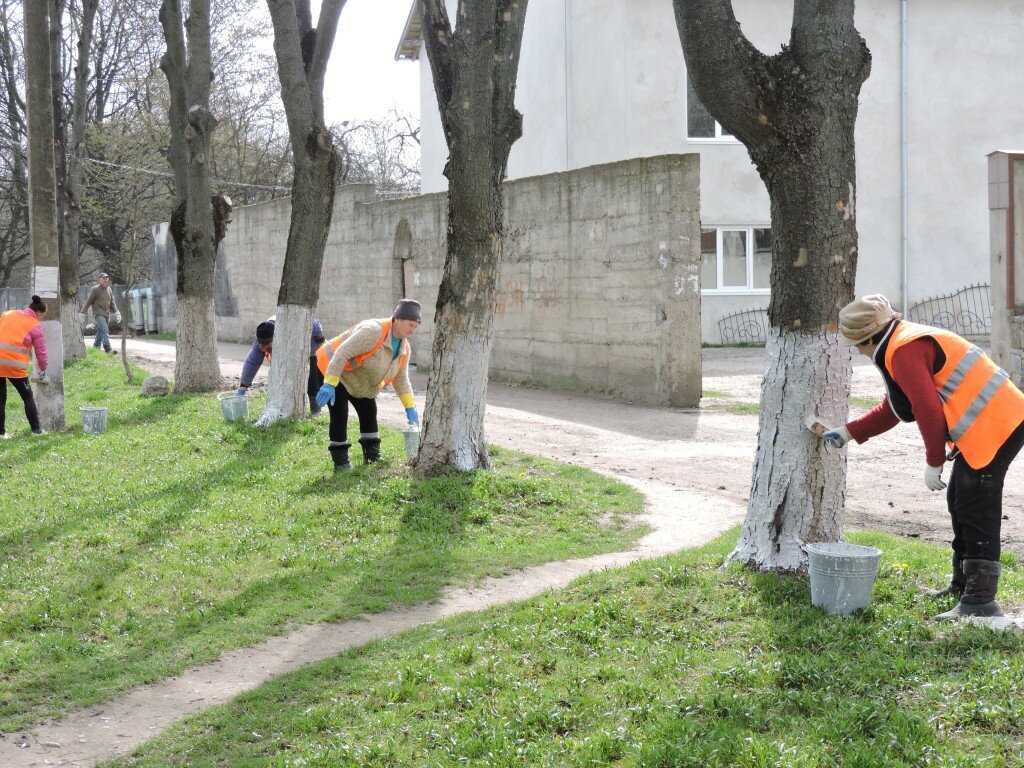
Осветление деревьев является популярной процедурой, которая выполняется с целью способствовать их здоровому росту и развитию. Однако, существуют мифы относительно необходимости белить стволы деревьев. В данной статье мы рассмотрим реальную необходимость осветления деревьев и его влияние на их рост и развитие.
Мифы о необходимости осветления деревьев

Одним из популярных мифов является утверждение о том, что осветление деревьев является обязательной процедурой для их выживаемости и роста. На самом деле, осветление не всегда является необходимым и может быть проведено только в определенных случаях.
Еще одним распространенным мифом является утверждение о том, что беление стволов деревьев защищает их от вредителей и болезней. В действительности, осветление стволов не является эффективным способом защиты от вредных организмов. Более эффективными методами являются правильное уход за деревьями и профессиональная обработка против вредителей.
Реальная необходимость осветления деревьев
Осветление деревьев может быть необходимо в тех случаях, когда они находятся в затененных местах и не получают достаточное количество солнечного света для своего нормального роста и развития. В таких случаях осветление может способствовать улучшению фотосинтеза и стимулированию роста растений.
Однако, перед осветлением деревьев необходимо провести анализ и оценку ситуации с учетом типа дерева, его состояния и окружающей среды. Также важно проводить осветление в соответствии со всеми правилами и рекомендациями, чтобы не повредить растение и достичь желаемых результатов.
Так стоп!!! Вы всё ещё не подписаны на наши каналы в Телеграмм и Дзен? Посмотрите: ТГ - (@historyfantasydetectivechat) и Дзен (https://dzen.ru/myshortsstorys)
Как осветление деревьев может повлиять на окружающую среду?

Осветление деревьев – это процесс, который вызывает много дискуссий и споров среди экологов и обычных людей. Существует несколько популярных мифов о необходимости осветления деревьев и его влиянии на окружающую среду. Давайте разберемся, насколько реальна эта необходимость и как она может повлиять на природу.
Осветление деревьев: мифы и реальность

Одним из распространенных мифов является утверждение о том, что осветление деревьев помогает им получать больше солнечного света и, следовательно, улучшает их рост и развитие. На самом деле, большинство деревьев приспособлены к своим условиям существования и способны получать нужное количество света даже без дополнительного осветления. Осветление деревьев может быть полезным только в тех случаях, когда они находятся в тени других построек или крупных растений.
Еще одним мифом является утверждение о том, что осветление деревьев способно защитить их от заболеваний и вредителей. На самом деле, осветление не имеет прямого влияния на здоровье деревьев и не может предотвратить возникновение болезней или нападение вредителей. Реальная необходимость осветления возникает лишь в особых случаях, когда деревья могут быть подвержены серьезным угрозам.
Влияние осветления на окружающую среду
Осветление деревьев может оказать отрицательное влияние на окружающую среду. Во-первых, это может привести к излишнему потреблению электроэнергии, что приводит к увеличению выбросов парниковых газов и негативно влияет на климат. Во-вторых, яркий свет с ламп освещения может привлекать насекомых и других животных, которые могут стать вредителями для деревьев или вызывать беспокойство у людей.
В итоге, необходимость осветления деревьев должна быть оценена в каждом конкретном случае. В большинстве случаев, деревья способны справиться сами с ситуацией и не нуждаются в дополнительном освещении. Однако, в некоторых случаях осветление может быть полезным и необходимым, но его применение должно быть ограничено и осознанным, чтобы минимизировать его негативное влияние на окружающую среду.
Преимущества осветления деревьев для городской среды

Вопрос осветления деревьев становится все более популярным в городской среде. Многие горожане задаются вопросом: почему нужно белить деревья? Давайте разберемся в этом.
1. Защита от солнечных ожогов. Осветление деревьев помогает предотвратить повреждения их коры от яркого солнечного света. Белый цвет отражает солнечные лучи, снижая температуру и уменьшая риск ожогов.
2. Повышение выживаемости. Осветленные деревья лучше переносят жару и засуху, что повышает их выживаемость в неблагоприятных условиях. Белый цвет отражает тепло, защищая растения от перегрева.
3. Улучшение эстетики. Осветление деревьев делает их более привлекательными и выделяющимися в городской среде. Белый цвет придает им свежесть и яркость, делая ландшафт более привлекательным и ухоженным.
4. Создание комфорта. Осветленные деревья создают дополнительную тень и прохладу в городской среде, что особенно важно в жаркое время года. Они способствуют улучшению микроклимата и созданию комфортных условий для жителей.
Таким образом, осветление деревьев имеет реальную необходимость для городской среды. Оно защищает растения от повреждений, повышает их выживаемость, улучшает эстетику ландшафта и создает комфортные условия для горожан.
Осветление деревьев: способы и технологии
Осветление деревьев – это процесс, который используется для защиты растений от солнечных ожогов и повреждений. Несмотря на распространенные мифы о необходимости белить все деревья, разбираем популярные способы осветления и рассматриваем их реальную необходимость.
Осветление деревьев: мифы и реальность
Один из распространенных мифов о белилках заключается в том, что все деревья нужно белить. На самом деле, не все растения нуждаются в осветлении. Некоторые деревья имеют достаточно крепкую кору и могут справиться с солнечными ожогами без дополнительной защиты.
Способы осветления деревьев
Существует несколько способов осветления деревьев. Один из них – использование белилок. Белилки представляют собой специальные составы, которые наносятся на стволы и ветви деревьев, создавая защитный слой от солнечных лучей.
Другой способ осветления – использование сеток и тканей. Сетки и ткани накрывают деревья, создавая тень и защищая растение от прямого солнечного света.
Оценка необходимости осветления
Оценить необходимость осветления деревьев можно, учитывая такие факторы, как вид дерева, возраст, состояние коры и климатические условия. В случае сомнений, рекомендуется проконсультироваться с опытными специалистами или арбологами, которые помогут определить реальную необходимость осветления.
В итоге, осветление деревьев – это важная процедура, которая помогает защитить растения от солнечных ожогов и повреждений. Однако, не все деревья нуждаются в осветлении, и оценка реальной необходимости является ключевым шагом перед применением способов и технологий осветления.
Мифы о сезонности осветления деревьев
Вопрос осветления деревьев актуален и вызывает множество споров среди садоводов и дачников. Однако многие из популярных мифов о сезонности осветления деревьев не соответствуют реальной необходимости.
1. Осветлять деревья нужно только весной

Разбираем один из самых распространенных мифов. Фактически, осветление деревьев может понадобиться в любое время года, в зависимости от конкретных условий и потребностей растения. Например, в летний период солнце может быть особенно ярким и деревья нуждаются в дополнительной защите от его воздействия. Также осветление может быть необходимо в осенний период, когда деревья начинают готовиться к зимнему сну и требуют дополнительного питания и защиты от неблагоприятных погодных условий.
2. Белить деревья только взрослые
Еще один распространенный миф гласит о том, что осветление деревьев необходимо только для уже выросших растений. Однако это не так. Молодые деревья также нуждаются в защите от солнечных ожогов и других внешних факторов. У них кожицы еще не такие плотные, и они более уязвимы перед воздействием солнечных лучей. Поэтому осветление молодых деревьев также является необходимой процедурой.
3. Осветление деревьев не приносит пользы
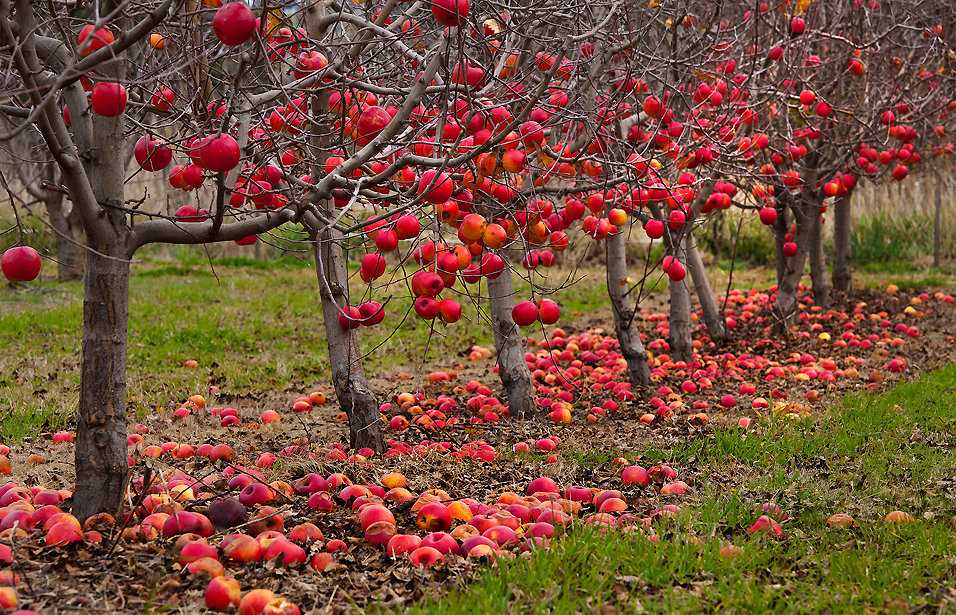
Некоторые считают, что осветление деревьев — это лишняя трата времени и средств, и оно не приносит реальной пользы. Однако это не верно. Осветление деревьев помогает предотвратить солнечные ожоги, способствует лучшему развитию растения и его здоровью. Кроме того, осветление деревьев позволяет регулировать температуру почвы и воздуха вокруг растения, что способствует его более полноценному росту и развитию.
Какие материалы используются для осветления деревьев?
Беление деревьев — это один из способов защиты растений от неблагоприятных факторов окружающей среды. Но среди садоводов и садовников существуют мифы о необходимости осветления деревьев.
Разбираем реальную необходимость и материалы, которые применяются для осветления деревьев.
Основной целью осветления деревьев является защита их от солнечных ожогов, повреждений, морозов и вредителей.
На практике используются различные материалы для осветления деревьев:
- Специальные белые краски и покрытия. Они обладают отражающими свойствами, которые помогают отражать солнечные лучи и защищать деревья от перегрева. Такие краски можно купить в специализированных магазинах или садоводческих центрах. Они наносятся на стволы и ветви деревьев, создавая защитный слой.
- Светоотражающие ленты и пленки. Этот материал также помогает отражать солнечные лучи и защищать растения от перегрева. Ленты и пленки крепятся на стволы и ветви деревьев, образуя своеобразный экран.
- Белые ткани и подушки. Их используют для накрытия верхней части крон деревьев. Такая защита позволяет надежно сохранить дерево от неблагоприятных погодных условий и предотвратить повреждения от солнца и мороза.
Важно помнить, что не все деревья требуют осветления. Некоторые виды растений сами способны справиться с агрессивной солнечной активностью и морозами. Однако, если в вашем регионе климат неблагоприятный и растение подвержено повреждениям, осветление деревьев может стать необходимой мерой защиты.
В заключение, осветление деревьев — это реальная необходимость в определенных условиях. Используемые материалы, такие как специальные краски, ленты, пленки, ткани и подушки, помогают защитить растения от перегрева, солнечных ожогов и морозов.
Подводные камни осветления деревьев: что нужно знать?
Осветление деревьев стало популярным способом улучшения их внешнего вида и сохранения их здоровья. Однако, существует много мифов, связанных с этой процедурой, которые важно разобрать.
Миф 1: Белить деревья можно в любое время года
Реальность: Осветление деревьев должно проводиться в определенное время года, чтобы избежать негативных последствий для растений. Лучшее время для осветления — весна или раннее лето, когда деревья находятся в активной фазе роста.
Миф 2: Осветление деревьев необходимо для всех видов
Реальность: Не все деревья требуют осветления. Некоторые виды имеют свой естественный цвет коры, который является частью их естественной красоты. Осветление может быть полезным в случаях, когда деревья покрыты лишайниками или другими вредными организмами.
Миф 3: Осветление защищает деревья от всех вредителей и болезней
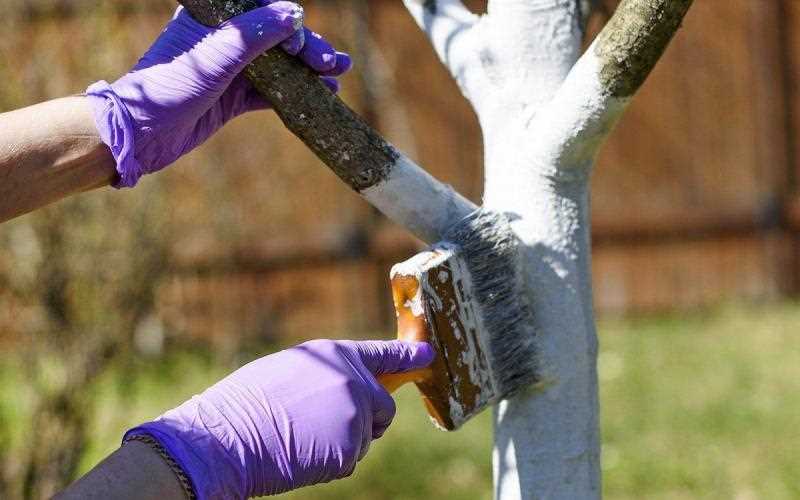
Реальность: Осветление деревьев может помочь предотвратить насекомых и болезни, но оно не является универсальным средством защиты. Другие меры, такие как правильный уход за деревьями и регулярное обследование, также необходимы для поддержания их здоровья.
Миф 4: Осветление деревьев делает их более привлекательными для покупателей
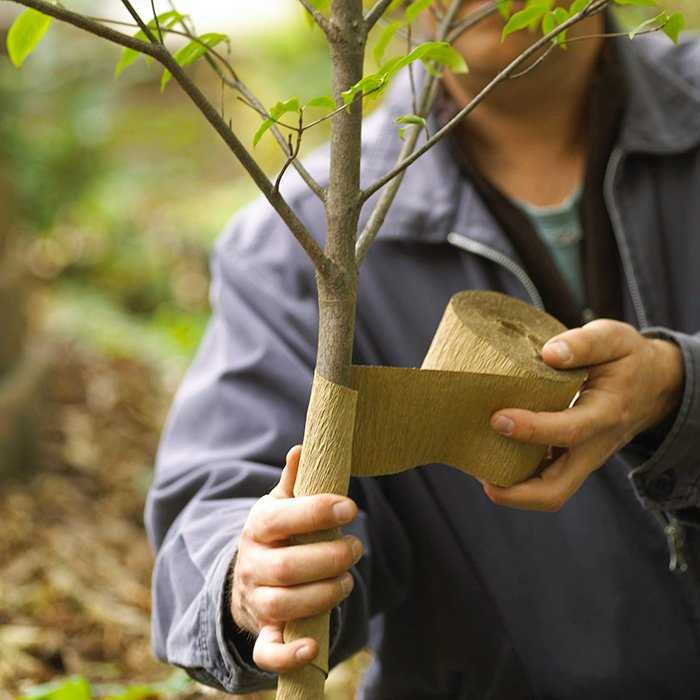
Реальность: Осветление деревьев может улучшить их внешний вид и сделать их более привлекательными для покупателей, однако это не является гарантией продажи. Другие факторы, такие как положение дерева и его состояние, также играют важную роль при принятии решения покупателя.
При осветлении деревьев важно учитывать их индивидуальные особенности и осуществлять процедуру в правильное время года. Только тогда можно достичь реальных положительных результатов и сохранить здоровье растений.
Вопрос-ответ:
Зачем осветлять деревья?
Осветление деревьев может быть необходимо в случаях, когда деревья находятся в тени высоких зданий или других объектов и не получают достаточного количества солнечного света для нормального роста. Осветление помогает улучшить условия для роста деревьев, что может быть особенно важно в городских условиях, где они играют важную роль в создании зеленых зон и улучшении качества воздуха.
Как осветлять деревья?
Осветление деревьев можно осуществлять разными способами. Один из самых распространенных методов — использование специальных прожекторов или светильников, которые направляют свет на крону дерева. Другой способ — обрезка листвы или ветвей, чтобы увеличить проникновение солнечного света. Также можно использовать зеркала или другие отражающие поверхности, чтобы увеличить освещенность вокруг дерева.
Какие преимущества может дать осветление деревьев?
Осветление деревьев может принести ряд преимуществ. Во-первых, оно способствует нормальному росту и развитию деревьев, что позволяет им лучше справляться с воздействием неблагоприятных факторов окружающей среды, таких как загрязнение воздуха или изменение климата. Во-вторых, осветление деревьев позволяет создавать более благоприятные условия для проведения отдыха или активного времяпровождения людей.
Могут ли деревья подвергаться вредным последствиям от осветления?
Если осветление деревьев проводится неправильно или слишком интенсивно, они могут подвергаться некоторым вредным последствиям. Например, чрезмерное осветление может повредить листву или ветви деревьев, что может привести к их засыханию или заболеванию. Также интенсивный свет может привлекать насекомых или птиц, которые могут нанести вред дереву. Поэтому важно правильно подобрать метод осветления и контролировать его эффекты на деревья.

